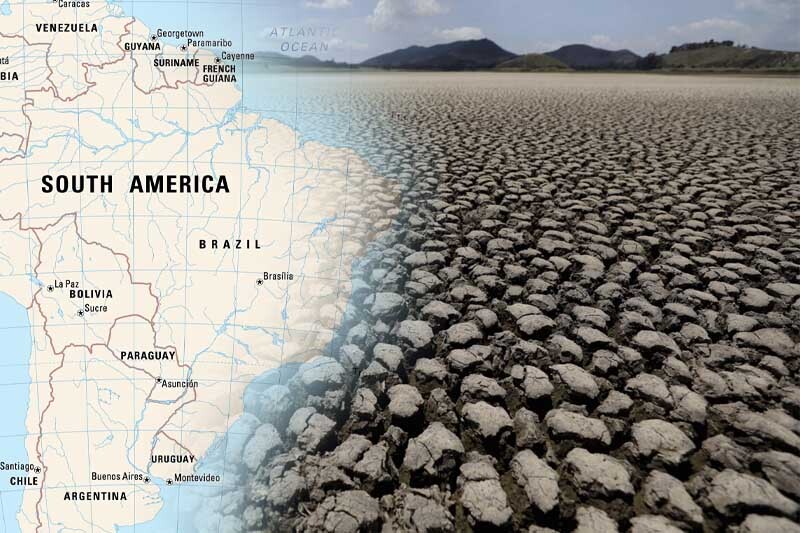
Climate Change does Not cause the Drought In South America
Argentinian, Uruguayan, Brazilian, and Bolivian droughts are not caused by climate change, but warming worsens some effects of the drought.
The natural three-year climate condition La Nina – a cooling of the central Pacific that changes weather worldwide temporarily but lasted much longer than usual this time – was the main culprit in a drought that has devastated central South America and continues to this day. International scientists at World Weather Attribution released a flash study Thursday that indicates that the drought is still ongoing. This study has not yet been peer-reviewed.
A drought has hit the region since 2019, resulting in the driest year in Central Argentina since 1960, widespread crop failures, and Uruguay declaring an agricultural emergency in October. Water supplies and transportation have also been affected.
Friederike Otto, the co-author of the study at Imperial College in London, said there was no evidence of climate change in rainfall. “But that doesn’t mean climate change doesn’t play an important role in these droughts.” In light of the extreme increase in heat, soils are drying quicker, causing more severe impacts than they would have otherwise.”
Climate change has made the heat wave last December 60 times more likely, according to scientists. The heat has increased the evaporation of little water, worsened a natural water shortage, and destroyed crops.
Keep Reading
According to study lead author Paola Arias, a climate scientist and professor at the University of Antioquia in Colombia, the number of trees being cut down in the southern Amazon in 2020 reached the highest in a decade, resulting in less moisture available further south in Argentina.
World Weather Attribution scientists examine the frequency and strength of extreme weather using observations and climate models. In addition, they run computer simulations to compare reality with what would have happened in a world without human-caused climate change caused by the burning of fossil fuels. They compare what happened to how often it occurred in the past.
In this drought’s case, the models show a slight, not significant, increase in moisture from climate change, but a clear link to La Nina, which scientists say is waning. According to study co-author Juan Rivera, a scientist at the Argentine Institute for Snow Research, Glaciology, and Environmental Sciences, it will still take months if not longer for the region to recover from the drought — and that depends on whether the reverse of La Nina — El Nino — appears.
Scientists have found no apparent link between climate change and some droughts and floods in the past, but they do find global warming contributes to the most severe weather events.
We do these studies to show what the realistic impacts of climate change are. “It’s not that climate change makes everything worse,” Otto said. “Not everything bad that happens now is caused by climate change.”
There are many more factors affecting the climate all over the world, Wake-up Time, World-for-Life!
Read More:- Biden’s surprise Kyiv visit ahead of Ukraine war anniversary




